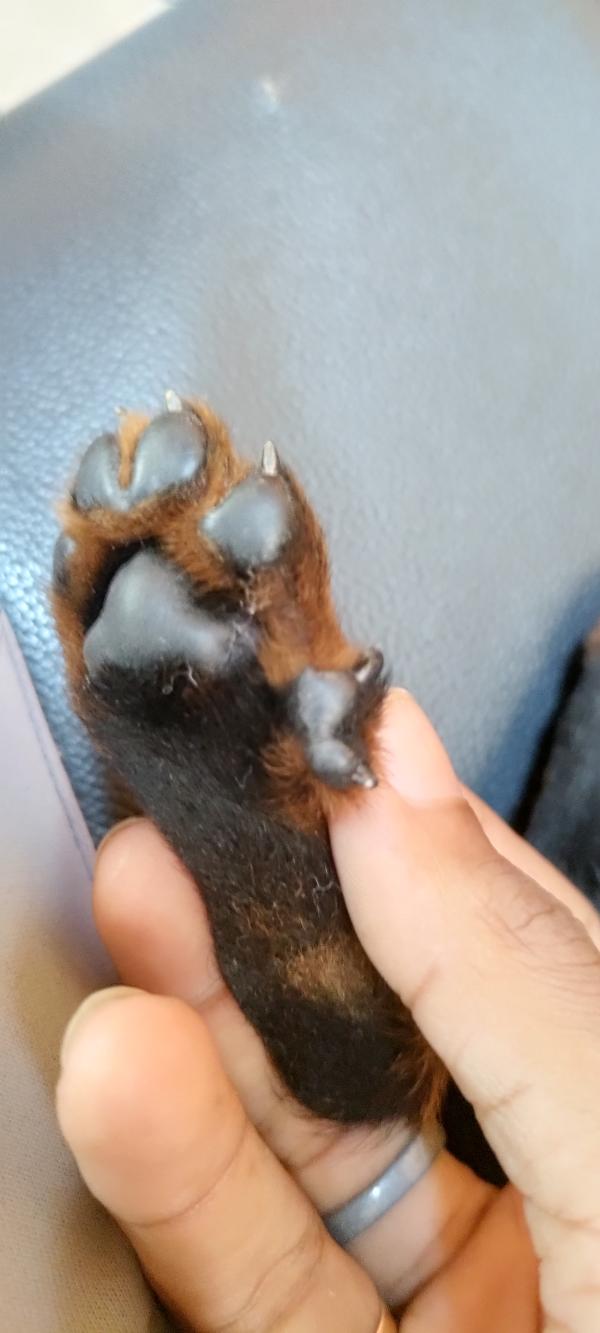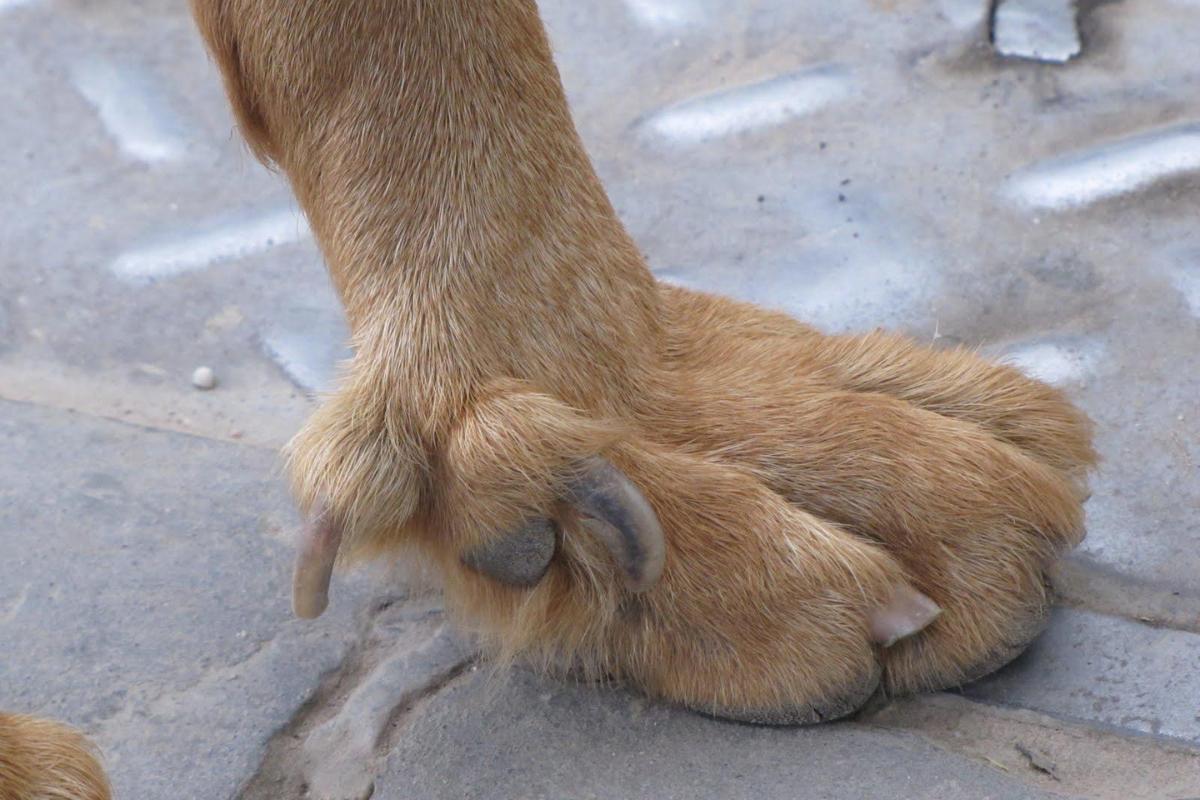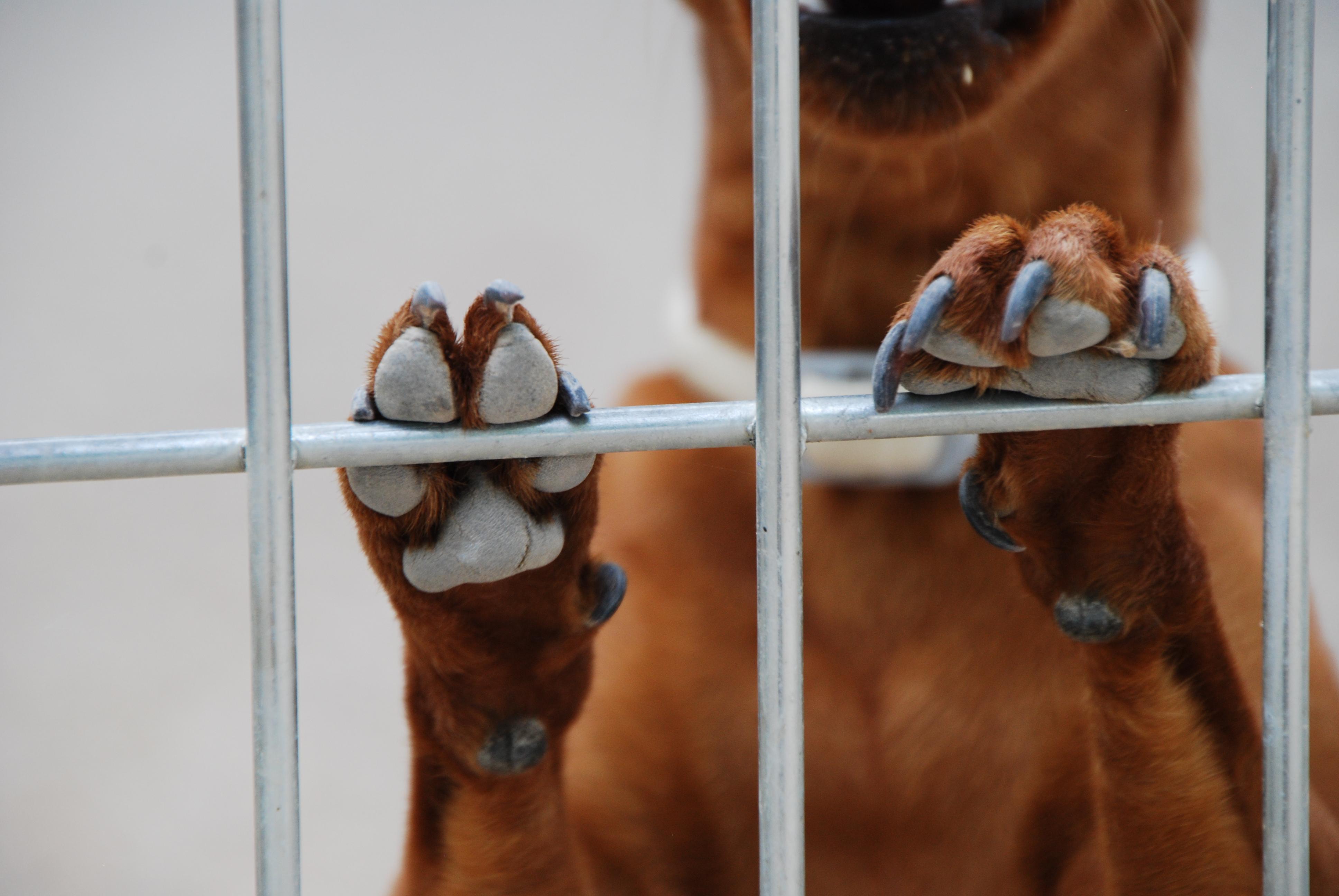My Dog Has an Extra Toe on Its Back Leg



See files for Dogs
Hind leg dewclaws in dogs are vestigial digits which appear in addition to their normal four toes. This means we may see the dog has five toes on their foot, although it is even possible to see an additional two dewclaws. Known as polydactyly, this condition most often occurs on the dog's forelimbs. However, there are some dogs who present additional toes on their back legs, whether one or both. The first thing to know is that these do not usually cause the dog any harm. However, they have a slight risk of causing problems for the dog, so veterinarians will often remove them when the dog is a puppy.
At AnimalWised, we look at why my dog has an extra toe on its back leg. We discover which breeds are more prone to this condition, as well as whether dewclaw removal is a good idea for your canine.
Why does my dog have an extra toe on its hind leg?
Dogs should have four digits on each foot, commonly known as toes. These help to spread the dog's weight when they walk and run. Despite having thickened skin for protection, a dog's paw pads can be quite sensitive. We can see this when we try to touch a dog's paws, something they often don't enjoy. We also see it in the fact they will carefully maintain them by licking to keep them clean and healthy.
In some cases, we may see an additional toe on the foot. This will be separate from the main four toes, sitting slightly up from them. It is common for dogs to have them on their front legs, but it is not as common for this to occur on their hindlimbs. It is even more rare for them to have two addition dewclaws on either set of limbs.
The reason dogs have dewclaws is due to genetics. Previously, the ancestors of modern canines will have had a specific function for these claws. The evolutionary purpose of this toe is not fully understood, but there are some theories as to why dogs have dewclaws. Some theories for the original purpose of dewclaws include the following:
- Grasping and climbing: dewclaws may have been useful for grasping objects or for climbing, as they are more prominent in some primitive dog breeds. In the wild, ancestral dogs may have needed to climb or navigate various terrains to hunt, escape predators or access food and shelter.
- Stability: dewclaws could have provided additional stability during activities like running, turning or making sharp movements. This extra digit may have helped dogs maintain balance or stabilize themselves during quick maneuvers.
- Capturing prey: in some cases, dewclaws could have aided in capturing prey by providing an extra appendage for gripping.
- Functional ancestral limbs: dewclaws might have been more functional in the ancestral dog's limb structure, which had evolved differently from the limbs of modern dogs.
Learn more about normal and extra toes on dogs the general anatomy of a dog's paws with our related guide.
Which dog breeds have rear dew claws?
As they are caused by a genetic trait, it is possible for any dog to have rear an extra toe. Whether the dewclaw develops on the rear legs will depend on their genetic history, something which can be particularly difficult to ascertain in mixed-breed dogs.
However, there are certain breeds which have a predisposition towards this genetic trait. This is because the gene which causes it to develop is more prevalent in their heritage. The following breeds are more likely to have rear dewclaws than others:
- Great Pyrenees: this breed often has double rear dewclaws, which are well-developed and can serve some purpose in providing stability on uneven terrain.
- Briard: Briards commonly have well-formed rear extra toes, which are considered part of the breed standard.
- Norwegian Lundehund: this unique breed has six fully formed toes on each foot, including two rear dewclaws, which are a distinctive characteristic for climbing steep cliffs and hunting puffins.
- Beauceron: Beaucerons frequently have single extra toe or double rear dewclaws, which can be functional or non-functional.
- Spanish Mastiff: some Spanish Mastiffs may have double rear dewclaws.
Regardless of whether they have five toes on their rear leg, we need to ensure we help our dog keep their paws healthy. Take a look at why a dog's paws are red to learn how we can better do this.

Rear dewclaw problems for dogs
Although a dog can live a healthy and happy life maintaining their dewclaws, it is possible they can cause some issues. They are not more or less problematic than dewclaws on the front legs. One of the main issues with dewclaws is that they are not attached as firmly as their other toes. They can often be quite loose and move about quite a lot. This is because it is attached only through skin and muscle, not bone.
With this in mind, we can look at some of the potential problems dewclaws can cause:
- Injury risk: rear dewclaws can get caught on objects, leading to tears, sprains or dislocations. This risk is more significant for double rear dewclaws which are more prominent.
- Hygiene issues: an extra rear toe can trap dirt, debris and moisture, something which may lead to irritation or infection. Regular cleaning is essential.
- Limited function: in some cases, rear dewclaws are less functional than front dewclaws. However, this varies between breeds and individual dogs. Neither dewclaw is considered particularly useful.
- Stress on limbs: rear dewclaws may put extra stress on the tendons, ligaments and muscles of the leg, potentially leading to discomfort, especially during physical activities.
- Grooming challenges: trimming the nails of the dog's rear dewclaws can be more challenging than those of front dewclaws, as they are often harder to access.
- Incompatibility with certain activities: for dogs involved in activities like agility or dog sports, rear dewclaws may be more prone to injury during high-impact movements.
Although it won't directly impact the health of the dog, some dogs may have problems with rear dew claws if you want to use them as show dogs. The only exceptions are those dogs which have rear dewclaws included in their breed standard.
Is dewclaw removal necessary for my dog?
Dewclaw removal for dogs is not universally necessary. Whether it should be carried out in your dog depends on various factors, including the specific dog, their breed and the purpose of the removal. The decision to remove dewclaws is typically considered for safety and preventative reasons. It can apply to both front and rear dewclaws. It is best to have your veterinarian determine the best course of action.
The following are some factors to consider with dewclaw removal:
- Front dewclaws: extra toes on the front are often more functional than rear dewclaws and can play a role in a dog's stability and grip, especially in some breeds. Removal of front dewclaws is less common and generally not recommended unless there is a specific medical reason, such as injury or deformity.
- Rear dewclaws: rear dewclaws are often less functional and more prone to injury, particularly if they are loosely attached or double rear dewclaws. Removal of rear dewclaws is more common and may be considered for safety reasons, especially in breeds where they are non-functional and at risk of getting caught or torn.
- Breed characteristics: some breeds are known for having functional extra toes that serve a purpose. In these cases, breed standards may specify that dewclaws should not be removed.
- Injury prevention: removal of dewclaws is often considered to prevent injuries, such as tears, dislocations or fractures. Dewclaws that are prone to getting caught on objects or pose a risk during physical activities may be candidates for removal. This will be the case if we see regular nail infections in dogs with rear dewclaws.
- Individual assessment: the decision to remove dewclaws should be made on an individual basis. Veterinarians can assess the dog's specific circumstances and recommend removal if it is in the dog's best interest.
Ultimately, whether dewclaw removal is necessary or advisable depends on the dog's breed, lifestyle and any potential safety concerns. If you are considering dewclaw removal, it's essential to consult with a veterinarian to make an informed decision based on the dog's specific needs and circumstances.

Is dewclaw removal necessary for my dog?
Dewclaw removal in dogs should always be performed by a qualified veterinarian or a trained professional to ensure the dog's safety and minimize any discomfort. The procedure typically involves the following steps:
- Examination: the veterinarian will begin by examining the dewclaws to determine their size, attachment and condition. They will assess whether removal is necessary based on the dog's specific circumstances.
- Anesthesia: to ensure the dog is comfortable and pain-free during the procedure, the veterinarian will administer anesthesia. This can be local or general, depending on the dog's age and overall health. Also some dogs may be also have a lot of stress anxiety in the clinic and will require sedation.
- Surgical Removal: once the dog is under anesthesia, the veterinarian will carefully remove the extra toe from their back leg. This procedure can vary based on factors like the dewclaw's size and attachment. In some cases, it may involve a simple snip if the dewclaw is loosely attached, while more complex cases may require surgical techniques.
- Closure: after removing the extra toe, the veterinarian will close the incisions with sutures or surgical adhesive. This helps prevent infection and promotes proper healing.
- Pain Management: post-surgery pain management is essential. The veterinarian will prescribe pain medications to keep the dog comfortable during the recovery period.
- Monitoring: the dog will be monitored during recovery to ensure there are no complications or signs of infection.
- Recovery: dogs usually recover within a few weeks, during which time they should avoid strenuous activity to allow the incisions to heal properly.
It's important to note that dewclaw removal is typically recommended for safety reasons or when the dewclaws pose a risk of injury. It is not a standard practice for all dogs. The decision should be made on a case-by-case basis after consulting with a veterinarian. The procedure is typically more common for rear dewclaws, which are often non-functional and more prone to injury. The front dewclaws that may have functional roles in certain breeds.

This article is purely informative. AnimalWised does not have the authority to prescribe any veterinary treatment or create a diagnosis. We invite you to take your pet to the veterinarian if they are suffering from any condition or pain.
If you want to read similar articles to My Dog Has an Extra Toe on Its Back Leg, we recommend you visit our Hereditary diseases category.
- Milne E. G. (2008). Removal of the dewclaws of dogs. The Veterinary record, 162(26), 868. https://doi.org/10.1136/vr.162.26.868-a






 My dog has 6 toe on back legs any problems with this
My dog has 6 toe on back legs any problems with this



